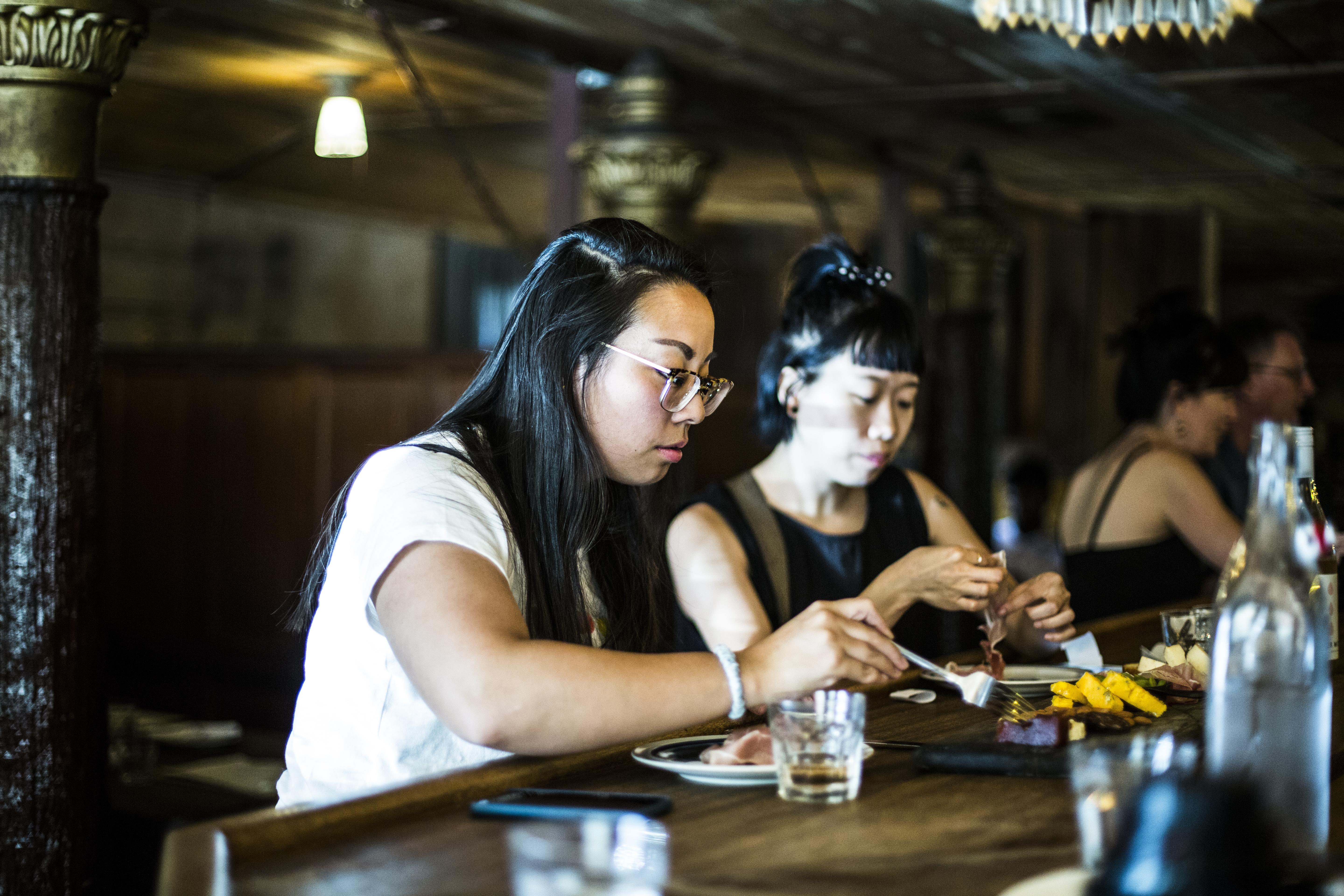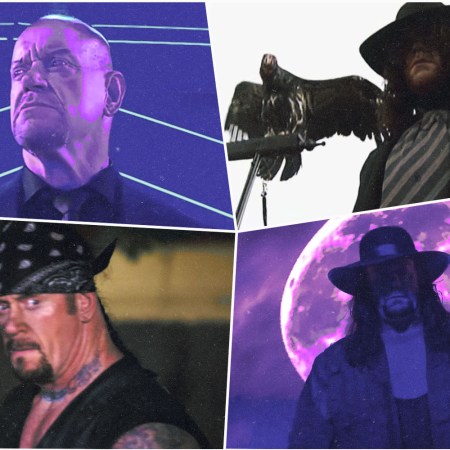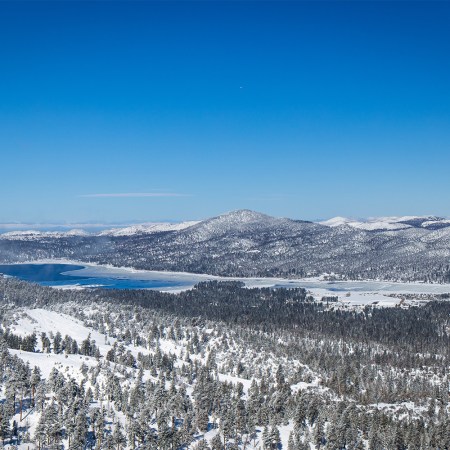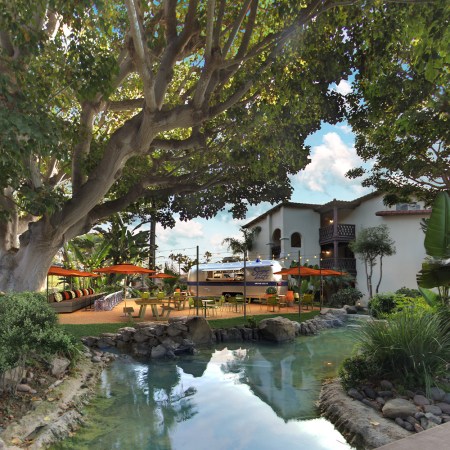When he was a kid, Morgan Runyon didn’t necessarily like The Old Place.
“Growing up in the restaurant, it was something I never had a desire to do,” he remembers. “But after my dad died, I recognized this was a piece of history I’d grown up with. And so many things that I’d grown up with had been ‘fixed’ — I didn’t want someone to come and fix this.”
The Old Place, a sort of hybrid restaurant-saloon, is housed in what was formerly a rural post office and Hank’s General Store, necessary resources for the small enclave of Cornell and travelers along Mulholland Highway in the early 1900s. When Morgan’s father Tom Runyon discovered the town in the mid-1960s, traffic in the area had slowed due to the construction of the 101 freeway and the Pacific Coast Highway, and the building was shuttered.

“My version of the story is he went out looking for the worst possible location demographically to open a restaurant, and found this,” Morgan says with a laugh as he sits at a big, wooden booth in the quiet restaurant on a weekday morning. “It was the middle of nowhere, there wasn’t a lot around here. The people that lived around here were kind of working class, and a lot of cowboys, and then some outlaw bikers, too.”
One of the area’s first settlers was John Ballard, a freed slave from Kentucky who moved to Los Angeles in 1859. He endured sabotage from white settlers who attempted to oust him from his coveted settlement by setting fire to his cabin. Instead of leaving, Ballard put a sign up that read, “This was the work of the devil,” above the ruins. That anecdote alone should provide a sharp read on the ornery feel of this secluded, historical area. (A peak in the area referred to as “Negrohead Mountain,” a variation on the pejorative early settlers used, was recently renamed Ballard Peak in Ballard’s honor.)

Another bit of folklore includes a group of early settlers, most likely from New York, who wrote to Ezra Cornell, founder of Cornell University, asking for educational supplies to be sent to California. Reportedly, Cornell more than made good on their requests, and the original schoolhouse still standing and renovated as Cornell School Ranch explains how the area got its name.
Undeterred, and perhaps even galvanized by the remoteness, Runyon opened up The Old Place in 1970 with two things on the menu: steak and clams. For renovations, he acquired and installed a massive antique saloon bar, a western-style facade and old-timey porch. Along with his wife, Barbara, Tom ran the cash-only restaurant until his death in 2009. And though Morgan initially balked at the idea of taking over, in the end, the pull of Cornell was too strong.
Now, almost a decade into his tenure as owner of the 40-something seat restaurant, the menu has a few more than two dishes and even one dish for vegetarians. Oh, and they take credit cards now.
“After about a year of doing it out of a sense of duty, I realized what a gift it was,” Morgan said. “And part of the reason was sharing it with people. What you get back from that is pretty amazing. I look at my job here is to maintain the soul of the place, guide the soul of the place.”
That soul includes photos all over the walls of historical moments for the building, or significant people who graced it with their presence during Tom’s heyday: Steve McQueen, Bob Dylan, Ali MacGraw and Jason Robards to name a few. Occasionally renting out the restaurant as a filming location on Monday, Tuesday or Wednesday, when the restaurant is closed, the space has also served a backdrop in shows like the original Twin Peaks and many others.
Cornell has always been something of an enigma in the area, wedged five miles away from Agoura Hills and two and a half miles from Malibu, it was initially thought to be a future hot spot for oil, but after early excavating led to discovering hot springs instead, Seminoles Hot Springs was born around 1911. About a decade later, in 1922, a private, man-made lake, Malibou Lake, was created to serve a community of 250 residents for weekend hunting trips. The Malibu Lake Club Dam was built where the Medea and the Triunfo creeks connected, and after several dry cycles, water eventually filled the lake.

With the water came Hollywood, as Paramount Ranch opened up a movie lot specializing in westerns in the area in 1927, and the 20th Century Fox Ranch was a couple miles away, where Malibu State Creek Park is now located. Then, in the mid-1930s came the construction of Lake Enchanto (later renamed Peter Strauss Ranch), one of the three amusement parks that preceded Disneyland, complete with a racetrack, animal pens and the largest freshwater pool west of the Mississippi.
While the attractions of Cornell in the ’20s and ’30s slowly petered out over the next several decades, they left a patina of excitement and history in the area. “This is hard to find anywhere in the country,” said Tim Skogstrom, owner and proprietor of The Old Place’s neighboring Cornell Winery. “We have the original 100-year-old building — this was the post office and general store, and we still have the school. You come to Malibou Lake and you get indoctrinated into the history pretty quickly.”
Skogstrom, who now lives at Malibou Lake, discovered Cornell in the early 2000s while working for Francis Ford Coppola and facing burnout over a work life spent almost entirely on the road. After enlisting Morgan to help convince his father for permission, Tim eventually succeeded in turning an empty building on their property into the blossoming business and de facto waiting room for patrons of The Old Place: Cornell Winery. Though it opened in 2007, the building itself was constructed by Tom and Morgan in the ‘80s, partially to hold the commercial licensing on the property.
“Putting all the infrastructure in was a lot of work, and I would do it all myself with a pitchfork and axe,” Tim explained. “I think that was what kind of won Tom over. Then, the winery just blossomed through the years. And I stuck to my guns, I wanted it to be a small-town feel that focused on local products.”
The synergy between these two businesses has helped The Old Place thrive under Morgan’s care, and Tim’s role in managing the restaurant and getting it up to speed in this new era also can’t be understated. Both men cite another historical gathering spot just up the road on Mulholland as a presence in the community as well — The Rock Store, a greasy spoon diner and gas station that’s been around for decades, opened by Ed and Veronica “Vern” in 1963, Vern now runs it after Ed’s death in 2012. An area above the diner, a short turn section of road dubbed The Snake, helped turn the spot into a biker hangout that would have as many as 300 motorcyclists hanging out on a busy day.
But all of these core businesses have been struggling after the massive Woolsey Fire in late 2018 swept through the area, destroying homes, businesses and wildlife, leaving a path of destruction and displacement in its wake, and deterring visitors — and the usual wave of tourists — from visiting the rural community.
“Preparing for the fires is something my dad ingrained in me so long ago,” Morgan said. “So I’ve been waiting forty years for this one. It was the fifth fire I’ve fought in these hills, and I was very fortunate to be able to here. This building is like an 100-year-old matchbox with all the match heads sticking out of it. The one thing that was going to burn was this thing, it’s all wood and it’s all very old dry wood — kindling.”

While most of the community was evacuating in preparation for the approaching burn, Morgan was tamping down dumpsters full of grease, setting up sprinklers and getting his hoses ready. Fortunately, Morgan’s efforts and a bit of luck kept The Old Place from succumbing to the fire, and in the end, he even describes the experience with good humor: “It was very intense, but also very rewarding.”
After surviving an unrelenting blaze like the Woolsey Fire, the best way to appreciate and celebrate the fact that The Old Place is still standing is to go see it for yourself, have a meal (I recommend the ribeye), taste some wine and explore Cornell’s many corners on your own. The best part about an adventure thirty miles outside of L.A. is you barely even have to leave home to explore it.
“The mountains are kind of unique here,” Runyon said. “They’re really beautiful, and they’re remote, but we’re still surrounded by everyone. It’s a good adventure for people, but it’s accessible too. That’s the beauty of what makes it work for us here, when you travel here, it feels like you’ve gone to Montana — but you’re going to sleep in your own bed at night.”
For more travel news, tips and inspo, sign up for InsideHook's weekly travel newsletter, The Journey.






















